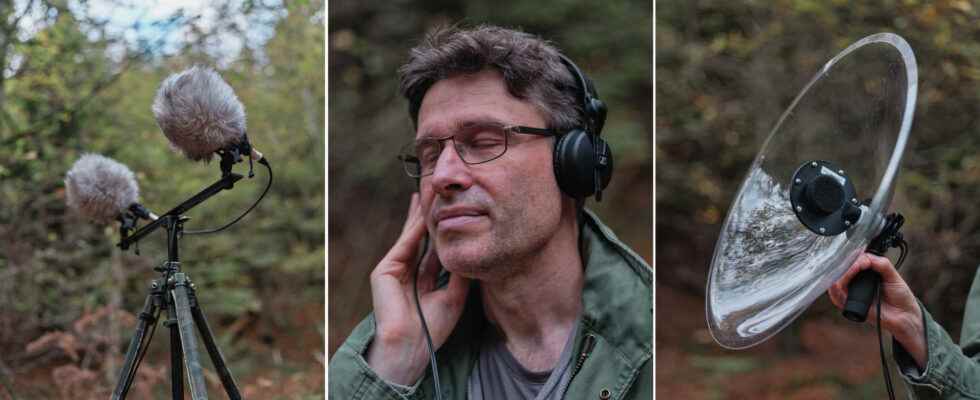Wind in the foliage to concentrate at the office, helmet on the ears. Tropical forest atmosphere in the underground car park; crickets as a ringtone; murmur of the stream to fall asleep; spring concert of birds to wake up to… The rustles of nature, everywhere, play the soothing soundtrack of urban life.
The less the meadows and forests sing, since the living collapses, the more these bucolic recordings seduce. In Nature & Découvertes stores, the “three sounds of nature” alarm clock (birds, waves and waterfall, at 39.95 euros) flows like a torrent as the snow melts, with 12,000 copies a year. Enough to “to relax and facilitate sleep, a major concern of the French, explains Valérie Durandy, director of the brand’s offer. For eighteen months, this “sound therapy”, in a way, has aroused an even stronger demand than before ».
Counting the ants on a spoiled peach on the ground, in summer, seems easier than listing the “Sounds of nature” playlists music listening platforms. Or the still-image YouTube pages “Sound of Rain and Storm” (four hours of listening, 18 million views), “Sound of the Sea, Song of Birds” (9 million views), “Sound of the Sea and nature to sleep, meditate”, etc. Even the National Forestry Office now puts on this site ” forest sounds ” for the purposes of “beneficial relaxation”presented by the whispering voice of a yoga teacher.
Sound libraries within reach of headphones
To show off, taking off your headphones in the open space, there’s nothing like evoking one of the collaborative websites (Xeno Canto, Listening Earth, Sounds of the Forest…), sometimes presented in the form of an interactive map, on which gracefully peck birdsong and soundscapes from around the world. Or, better yet, the sound library of the National Museum of Natural History (MNHN) and its 24,000 sumptuous audio files of blue tit, Eurasian bittern, cymbal grasshopper, maquis barbitist and other liliaceous phaneroptera.
For ten years now, the natural sound archives of the MNHN (just a click away or compiled on CD) have swelled at the same rate as the interest in ecoacoustics. Either the recording over a long period of time of a soundscape to gauge its biodiversity and its evolution, subject to climate change, we grasp, thanks to Jérôme Sueur, teacher-researcher at the Museum: “In the Haut-Jura natural park, for example, our four recorders installed in the trees have been triggered for one minute every quarter of an hour for four years. We collect two thousand five hundred hours of recordings per year, we analyze them thanks to the automatic recognition of species enabled by artificial intelligence and the sound database of the sound library. »
You have 73.09% of this article left to read. The following is for subscribers only.
